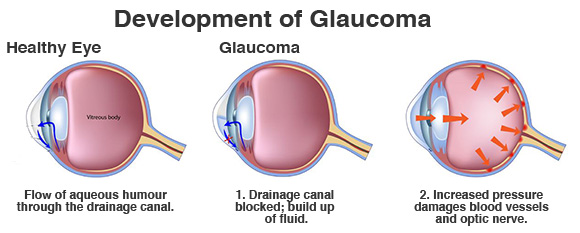Glaucoma
What is Glaucoma?
Glaucoma is one of the world’s leading causes of blindness. Glaucoma describes a family of diseases that all effect vision by causing progressive irreversible damage to the optic nerve that carries the visual signal from the eye to the brain. There are many different sorts of glaucoma, some of which are exceedingly rare. All patients with glaucoma require lifelong monitoring as this condition has the potential to cause blindness. However, early diagnosis and treatment can often prevent this. High eye pressures are often associated with glaucoma and treatments generally focus on lowering this. It is particularly important to have regular screening if there is a family history of glaucoma.
What are the symptoms?
In early disease, there are usually no symptoms as the condition affects peripheral vision first. This is not noticed until advanced disease causes significant visual field loss and "tunnel vision". At this stage, patients often start bumping into things.

What is the treatment?
Initial treatments are medical with powerful drugs given as eye drops. Sometimes, laser treatment may be indicated and more rarely conventional surgery. It is important to have an exact and accurate diagnosis to plan logical treatment and this can only be done after an examination by a consultant ophthalmologist. Special tests such as gonioscopy, pachymetry, tonometry and field analysis are likely to be required. Gonioscopy is an examination of the drainage angle of the eye: the drainage angle is a "sieve" where the aqueous fluid goes out of the eye. Inspection requires the use of a diagnostic contact lens which is placed on the eye momentarily. This is required to define whether the glaucoma is "open angle" or "closed angle" – a fundamental sub-division. Pachymetry is measurement of the thickness of the cornea, usually with an ultrasonic device. This is important as pressure readings are falsely high if you have a thicker than average cornea but more dangerously falsely low if you have a thin cornea, either naturally or after laser vision correction. Tonometry is the measurement of the intraocular pressure (IOP) using a Goldmann Tonometer: the "gold standard". A "normal" IOP does not rule out glaucoma and some patients develop the disease despite pressures in the normal range for the population. Field testing is required to see if there is any damage to the visual field. This is done separately for each eye and you will be asked to "click" whenever you see a light flash in the periphery of your vision. If you have glaucoma you will need field testing at least once a year.
